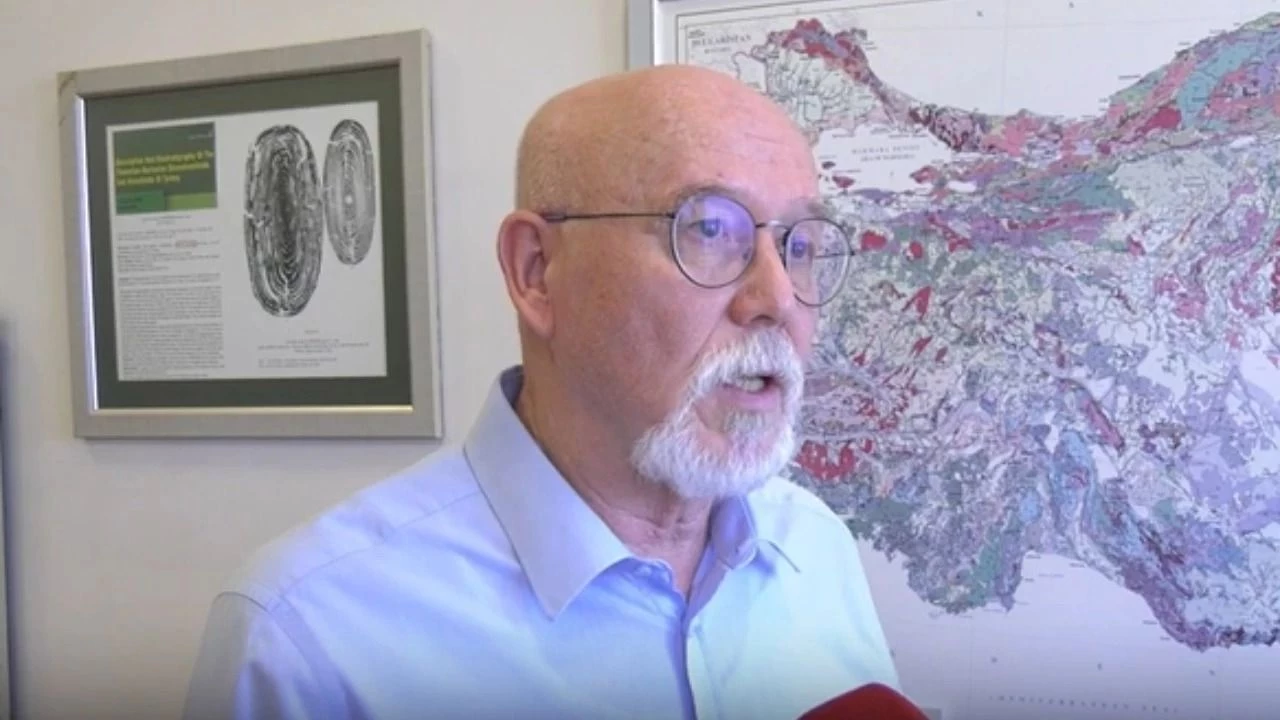Critical earthquake warning for Ankara from expert!

Prof. Dr. Gürol Seyitoğlu, a faculty member in the Department of Geological Engineering at Ankara University's Faculty of Engineering, reported that Ankara is considered safe in terms of seismicity, but that three active faults, identified as the Eldivan-Elmadağ Tectonic Wedge, the Abdüsselam Tectonic Wedge, and the Beypazarı Blind Thrust Zone, are located near the city center. Seyitoğlu noted that these faults are also very close to the North Anatolian Fault, the Eskişehir Fault, and the Kırıkkale-Erbaa Fault, and spoke to ANKA News Agency on the subject.
Prof. Dr. Gürol Seyitoğlu, particularly noting that a potential rupture in the Eldivan-Elmadağ tectonic wedge could trigger a 6.5-7 magnitude earthquake, stated that urban transformation should begin with Demetevler as a priority and that glass buildings pose a significant danger.
"WE SEE ELMADAG'S CONTINUOUS RISE"
Prof. Dr. Gürol Seyitoğlu noted the following:
"Our studies so far have shown us that Ankara is located at the intersection of major faults. The most important of these are the Kırıkkale-Erbaa fault, the Eskişehir fault, and the Tuzgölü fault. The area between these three faults is compressed in a northwest-southeast direction. This compression is creating three fundamental structures around Ankara. One of these is the section we call the Eldivan-Elmadağ Tectonic Wedge. The other is the Abdüsselam Tectonic Wedge. The other is the section we call the Beypazarı Blind Thrust Zone. According to GPS data, that is, satellite data, in the northwestern Central Anatolian compression zone, the section that bears the most contraction in this region is the Eldivan-Elmadağ Tectonic Wedge. We believe that if a major earthquake is expected around Ankara, it will be on it. This is because the contraction on it is 12.5 mm per year. Morphological data, in other words, the extraordinary digging of the streams towards the bottom, also shows that Elmadağ is constantly rising upwards. How many millimeters? Studies haven't yet determined whether it's rising, but it's carrying most of the contraction over the Eldivan-Elmadağ Tectonic Wedge. Therefore, if a major earthquake occurs around Ankara, we believe it will occur over this structure, the Eldivan-Elmadağ Tectonic Wedge. Paleoseismological studies need to be conducted on this structure and the earthquake recurrence period needs to be studied.

"WE HAVE OBSERVATIONS ABOUT THE CHARACTER OF THE BAĞLICA FAULT"
There are also earthquakes near Ankara's city center that worry us. One of these is the 3.5 magnitude Etimesgut earthquake that occurred on April 30, 2010. And the most recent earthquake we experienced in Ankara was the August 11, 2025, earthquake. These earthquakes are located in the area between the Eldivan-Elmadağ Tectonic Wedge and the Abdüsselam Tectonic Wedge. We believe these earthquakes are related to the uplift we call the Melikşah-İkipınar Uplift. The Bağlıca fault, in particular, has not yet been identified, but our work on this has continued. We have observations about the character of the Bağlıca fault, which we are working to compile into a scientific paper.
"IT IS PREDICTABLE THAT IT MAY BE BETWEEN 6.5-7"
If the Eldivan-Elmadağ tectonic wedge shifts, it's predicted to be between 6.5 and 7 degrees. Demetevler immediately comes to mind. Because we know the building stock there is very weak, even without any further work. Therefore, if urban transformation is to begin, it should begin there in Ankara. We also have the glass-clad skyscrapers that have become very popular in Ankara in recent years. Even if these skyscrapers don't collapse, they will still experience a certain amount of oscillation. I believe that the glass-clad surfaces will pose a significant life-threatening risk to people below. Let me just say that civil engineers need to consider the necessary precautions against this.
Seyitoğlu emphasized the need for funding for scientific research, saying, "It's incomprehensible that scientists would be able to raise funds by following employers. What should happen is for the state to collect its taxes and create a research fund at TÜBİTAK from those taxes. Scientists then submit their scientific projects to those funds. Appropriate projects are supported after an objective evaluation. Scientific research should continue in this manner."
Source: ANKA
Tele1





